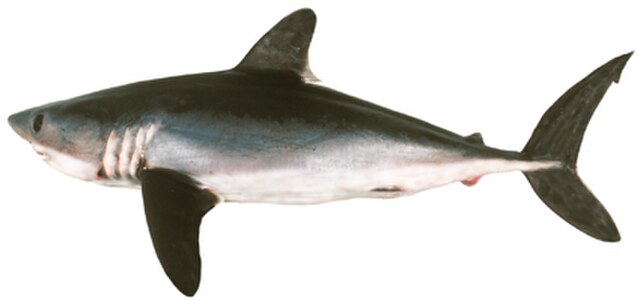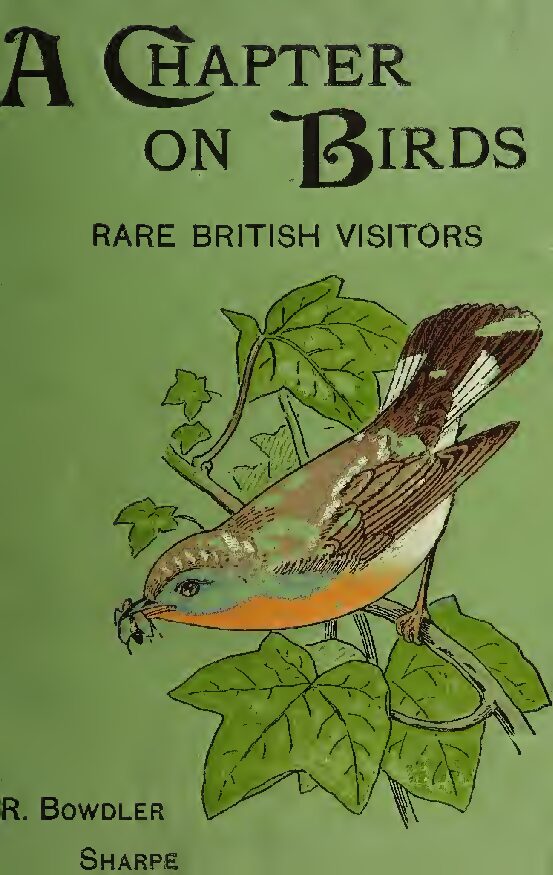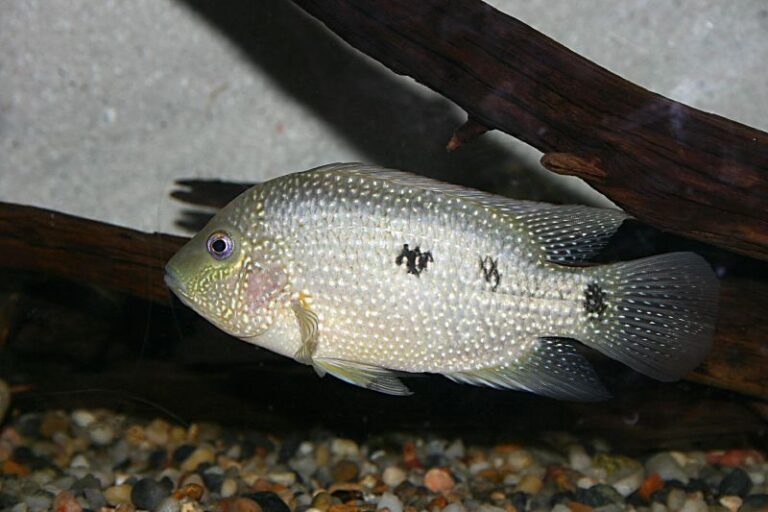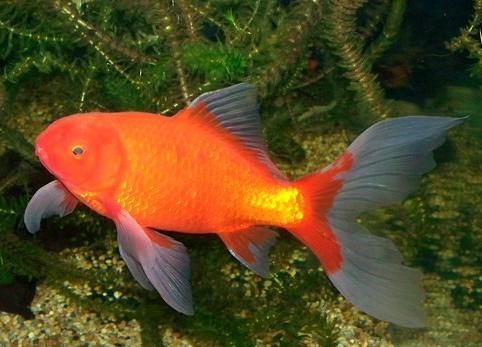Fishing Ethics: Conservation, Catch-and-Release, and Angler Responsibility
By Adam Hawthorne | Last Modified: May 22, 2025

I was ten years old when my grandfather caught me throwing rocks at a school of bluegill near our dock on Lake Michigan. Instead of yelling, he sat me down on the weathered planks, his tackle box between us, and explained something I’ve never forgotten: “Adam, with every privilege comes responsibility. These waters give us food, fun, and peace – we owe them respect in return.”
That simple lesson has shaped my three decades of fishing more than any technique or fancy gear ever could.
Understanding Fishing Ethics Beyond the Basic Rules
Most anglers understand fishing ethics as just following regulations – get your license, know your limits, measure your catch. That’s the bare minimum, like saying you’re a good driver just because you stop at red lights. True fishing ethics goes deeper.
I’ve watched the same lakes and rivers change dramatically over my lifetime. The crystal-clear waters where I caught my first trout on the Au Sable River now battle sediment runoff from development. The massive schools of perch I chased as a teenager on Lake Michigan have thinned considerably against the pressure of warming waters and invasive species.
Ethical fishing isn’t just about following rules – it’s about becoming a guardian of the waters we love.
The Three Pillars of Ethical Angling
In my experience, fishing ethics rests on three main principles:
- Resource Conservation – Protecting fish populations and habitats
- Proper Catch Handling – Minimizing stress and mortality
- Community Responsibility – Leading by example and educating others
One without the others falls short. I’ve met plenty of anglers who practice perfect catch-and-release techniques but trash their fishing spots with empty bait containers. Or the conservationists who handle fish so roughly they might as well keep them for dinner instead of releasing them to die later.
Resource Conservation: Thinking Beyond Today’s Catch
Conservation starts with understanding that fish aren’t limitless. Last summer, I was fishing a small inland lake near Traverse City that had been absolutely hammered by fishing pressure. Where my son Tommy and I could catch 30-40 decent bass in a day just five years ago, we worked hard for a dozen smaller ones.
I ran into Rick, the old-timer who’s been fishing that lake for 40 years, and he shared something that stuck with me. “The lake gives what we let it give,” he said while organizing his tackle box. “Too many folks taking limit catches every weekend means eventually nobody catches anything worth keeping.”
Selective Harvest: Choose What You Keep
Practicing selective harvest has completely changed my approach to keeping fish:
- Focus on abundant species in your region
- Keep mid-sized fish when possible (they’re usually the best eating anyway)
- Release large breeding-sized fish
- Avoid keeping stressed fish, even if legal
I’m not saying never keep fish – that’s not realistic or necessary. My family enjoys fresh walleye and perch dinners regularly. But I’m much more thoughtful about what goes in the cooler now.
The most eye-opening example came during a fishing trip with my buddy Dave, who guides on the flats in Florida. We were catching speckled trout, and I was about to keep a massive 24-inch female when Dave stopped me. “That big girl will lay over a million eggs this season,” he explained. “The 16-18 inch males taste better anyway.”
He was right on both counts.
Habitat Protection Goes Beyond Pick Up Your Trash
Protecting fish habitat means:
- Supporting organizations that restore watersheds through donations or volunteer work
- Being mindful of bottom contact when wading streams
- Avoiding disturbance of spawning areas during sensitive times
- Reporting pollution or habitat destruction to authorities
- Minimizing wake damage in shallow areas
When Finn (my black lab) and I fish the shallow bays near Traverse City, I use my trolling motor instead of the outboard whenever possible. The difference in bottom disturbance is dramatic, especially in areas with underwater vegetation that provides crucial nursery habitat.
Lake associations and watershed councils often need volunteers for cleanup events and habitat improvement projects. I’ve spent many Saturday mornings helping place fish structures in lakes or planting streamside trees with the Conservation Resource Alliance here in northern Michigan. The satisfaction of watching those habitats improve over the years beats any day of fishing.
Proper Catch Handling: It’s Not Just About Keeping vs. Releasing
I’ve watched too many well-meaning anglers practically kill fish they intend to release. If you’re going to practice catch-and-release (and I hope you do for some portion of your fishing), doing it properly matters enormously.
Last July, I was fishing for smallmouth bass with my kids on a scorching hot day. The water temperature was pushing 80 degrees, which meant those fish were already stressed before we even hooked them. We switched to using barbless hooks, kept the fish in the water while removing hooks, and didn’t even take photos that day.
Tommy was disappointed about not getting pictures with his catches, but it was a perfect teaching moment about putting the fish first. When we returned a week later during cooler weather, the fishing was still excellent – probably because we and hopefully others had minimized stress on those fish during the heat wave.
Catch-and-Release Best Practices That Actually Work
In 30+ years of fishing, I’ve refined my release approach down to these essentials:
- Use appropriate tackle to avoid over-tiring fish
- Wet your hands before handling fish (dry hands remove protective slime)
- Keep fish in the water when removing hooks if possible
- Use barbless hooks or crush your barbs (I crush all mine now)
- Cut the line on deeply hooked fish rather than causing additional damage
- Support the fish’s weight horizontally rather than vertically
- Minimize air exposure (count seconds – aim for under 10)
- Revive fish facing upstream in current or gently move them in still water
The reviving technique is something many anglers skip. I hold the fish gently in the water, oriented into any current, until it swims away on its own power. In lakes, I’ll slowly move the fish forward to push water over its gills until it’s ready to go.
Species-Specific Handling Considerations
Different fish need different handling approaches:
- Trout and Salmon: Extremely sensitive to handling. Keep them fully in the water if possible, and never squeeze them. Their internal organs are easily damaged.
- Bass: Remarkably tough, but their lower jaw can be injured by “lipping” larger fish vertically. Support their body horizontally when lifting larger specimens.
- Pike and Muskie: Watch those teeth! Use proper tools like jaw spreaders and long-nose pliers. Never grab them by the eye sockets as I’ve seen some anglers do.
- Panfish: Their smaller size makes them easy to over-handle. Wet hands are especially important here.
When my daughter Emma caught her first pike last summer on Lake Huron, I made sure to show her how to support its body properly while I removed the hook. It was a teaching moment – not just about handling pike, but about respecting all fish we catch regardless of species.
Sometimes you see advice online about fish handling that just doesn’t match reality. I once read an article claiming you could hold bass out of water “for several minutes” with no ill effects. Anyone who’s actually observed released fish knows that’s complete nonsense. Extended air exposure leads to delayed mortality that most anglers never witness.
The Ethics of Fishing Pressure
Something we don’t talk about enough is the ethics of how much pressure we put on specific fisheries. I’ve watched “hot” fishing spots get absolutely hammered after someone posts about them on social media.
Social Media and Fishing Locations
I’ve changed my approach completely on this. I used to post exact fishing locations online, but now I’m much more general. “Northern Michigan” instead of the specific bend on the Boardman River where I found a new steelhead run. This isn’t about keeping spots “secret” – it’s about distributing pressure.
Last spring, I watched a stunning example of this when someone posted about catching jumbo perch at a specific GPS coordinate on Grand Traverse Bay. Within 24 hours, over 30 boats were concentrated in an area the size of a basketball court. Those perch were cleaned out within days, and the school structure was completely disrupted.
Consider how you share your fishing success:
- Is this a resilient fishery that can handle increased pressure?
- Could you be more general about locations while still sharing your experience?
- Are you highlighting sustainable practices in your posts?
- Could you focus on the experience rather than the body count of fish?
I still share fishing photos and stories – fishing is meant to be celebrated! But I’m thoughtful about exactly what information I include.
Community Responsibility and Leading by Example
If you’ve been fishing for a while, you’re automatically a role model to newer anglers whether you want to be or not. I became acutely aware of this when taking my kids fishing for the first time.
“Why is that man keeping all those little fish, Dad?” Tommy asked me when we were at a popular fishing pier in Traverse City. The angler in question had a bucket full of undersized bass, well beyond the legal limit. Rather than confronting him directly, I used it as a teaching moment with Tommy, explaining why size limits exist and how they protect fisheries.
Later, I discreetly reported the violation to the local DNR officer. It wasn’t about getting someone in trouble – it was about protecting a resource we all share.
Becoming a Steward and Educator
I’ve found these approaches effective for positive influence:
- Offer help to struggling new anglers (without being condescending)
- Pack out more trash than you bring in
- Politely share regulations when you see them being broken
- Support youth fishing programs and education
- Volunteer with habitat restoration projects
- Engage with local fishing regulations during comment periods
Last summer, I participated in the Michigan Clean Water Corps volunteer monitoring program, sampling water quality in several local streams. Understanding the science behind healthy fisheries has made me a better advocate and a better angler.
I’ve also started bringing an extra trash bag specifically for picking up fishing line. Monofilament is particularly deadly to wildlife, and I’ve found it tangled in shoreline brush at almost every fishing spot I visit.
Teaching Kids About Fishing Ethics
Children are naturally conservationists if we nurture that instinct. When my kids started fishing, we established some simple family rules:
- We always leave our fishing spot cleaner than we found it
- We talk about which fish we might keep before we start fishing
- We treat every fish with respect, even “rough” fish like suckers or sheepshead
- We learn about the ecology of where we’re fishing, not just the target species
Emma now reminds ME to wet my hands before handling fish we plan to release. Kids absorb these lessons quickly when they see the adults in their lives practicing what they preach.
There’s a special joy in watching a child release a fish and seeing their genuine concern for its welfare. They understand intuitively what many adults forget – that we’re just visitors in the underwater world, not its masters.
Ethical Approaches to Different Fishing Methods
Different fishing techniques bring different ethical considerations.
Fly Fishing Ethics
While I’m primarily a conventional tackle angler, I’ve done enough fly fishing to appreciate its unique ethical landscape:
- Wade carefully in trout streams to avoid disrupting spawning beds
- Consider barbless hooks as standard practice
- Respect “beat” systems on popular rivers where they exist
- Be mindful of crowding in popular areas
Last April I was fly fishing the Holy Waters section of the Au Sable during hendrickson hatches – prime time when the river gets crowded. Another angler was working his way upstream, clearly new to the sport. Rather than getting frustrated when he waded through a run I was planning to fish, I spent a few minutes showing him the “leap-frog” approach most anglers use to share the river. He was grateful, and we ended up taking turns on some productive pools.
Bait Fishing Considerations
Bait fishing brings additional ethical considerations:
- Dispose of unused live bait properly (never dump into the water)
- Use circle hooks when possible to reduce deep hooking
- Consider artificial alternatives for catch-and-release fishing
- Be prepared to cut lines on deeply hooked fish
I still use live bait occasionally, particularly when fishing with kids or targeting certain species like catfish. But I’m much more thoughtful about it than I used to be. When Tommy and I fish with worms, we use slightly larger hooks to reduce the chances of deep hooking, and always have line cutters ready for any fish that swallows the hook.
Tournament Ethics
Bass tournaments have evolved significantly with catch-photo-release formats and better fish care. If you participate in tournaments:
- Prioritize fish care over competitive advantage
- Know the proper use of livewells (aeration, temperature control)
- Consider supporting formats that minimize fish stress
- Hold partners accountable for ethical handling
I participated in a small club tournament on Mullett Lake two summers ago where the organizer introduced a “dead fish penalty” that exceeded the weight of any legal bass. It completely changed how anglers handled their catch, with everyone using oxygen and ice in livewells during the hot August day. Not a single fish died during weigh-in.
The Complex Ethics of Invasive Species
Here in the Great Lakes region, invasive species management adds another layer to fishing ethics. Species like round goby, sea lamprey, and Asian carp have dramatically impacted our fisheries.
The Michigan DNR actually encourages anglers to catch and kill certain invasive species rather than practice catch-and-release. It feels strange at first to be harvesting fish without size or bag limits, but understanding the ecology makes the practice clearly ethical. Removing invasives like round goby is a service to the native ecosystem.
However, it’s crucial to properly identify these species. I once watched an angler proudly “removing invasives” who was actually killing native madtoms, mistaking them for round gobies. If you’re uncertain about identification, take a photo and check with local authorities or resources before killing any fish.
Economic Aspects of Fishing Ethics
There’s a financial side to ethical angling that deserves attention. How we spend our fishing dollars can promote conservation or harm it:
- Support local bait shops and tackle stores practicing sustainable methods
- Consider buying from companies with strong environmental commitments
- Purchase the correct licenses and stamps, even if enforcement is unlikely
- Recognize the true value of fishing access beyond just catching fish
I’ve become increasingly mindful about which companies get my fishing dollars. Some manufacturers have made environmental stewardship core to their business, while others continue with wasteful packaging and unsustainable materials.
The Patagonia approach to product repair rather than replacement has influenced my thinking here. I now look for fishing gear that’s repairable and durable rather than the cheapest option. My favorite fishing pliers are 15 years old and have been repaired twice – that’s three pairs of cheap pliers that didn’t end up in a landfill.
When Ethics and Regulations Diverge
Sometimes, what’s legal and what’s ethical aren’t the same thing. I’ve encountered plenty of situations where following regulations wasn’t enough to protect the resource.
For instance, Michigan regulations allow catch-and-release fishing for bass during the spawn. Biologically, this can be disruptive to reproduction when too many fish are removed from nests, even temporarily. During early June, I choose to either target different species or fish bass waters with lower pressure, even though it’s perfectly legal to target them.
Similarly, on hot summer days when water temperatures exceed 75°F, I’ll often stop targeting trout entirely, even though fishing for them remains legal. The combination of warm water and catch-and-release mortality becomes too high for my comfort.
Developing your own ethical code that sometimes exceeds regulations isn’t about virtue signaling – it’s about truly caring for the resource beyond what minimum legal standards require.
Practical Steps to More Ethical Fishing
If you’re looking to elevate your fishing ethics, here are some practical starting points:
- Invest in proper release tools – Long-nose pliers, fish grips, dehooking devices, and a net with rubber or knotless mesh make proper catch-and-release much easier.
- Learn proper fish handling before you need it – Don’t wait until you have a fish gasping in your hands to figure out the best release method.
- Consider using barbless hooks or crushing your barbs – This simple change reduces injury and handling time dramatically.
- Join local conservation organizations – Groups like Trout Unlimited, B.A.S.S. Nation, or local lake associations turn individual concern into collective action.
- Participate in trash cleanups – Either join organized events or simply bring an extra bag to collect trash when you fish.
- Educate yourself about watershed issues – Understanding what affects water quality in your fishing areas helps you become a better advocate.
- Speak up – When you see regulations being ignored, say something – either directly or by reporting to authorities.
One small habit I’ve developed is taking a moment at the end of each fishing trip to ask myself: “Did I leave this place and these fish at least as healthy as I found them?” It’s a simple question that often leads to meaningful reflection.
Ethical Fishing FAQs
Is catch-and-release always more ethical than keeping fish?
Not necessarily. Properly harvested fish from healthy populations, when utilized for food, can be more ethical than poor catch-and-release practices that lead to high mortality. The key is making thoughtful decisions about which fish to keep and which to release.
How do I handle a situation where I see someone breaking fishing regulations?
This requires judgment. For minor infractions, a friendly, educational approach often works best. “Hey, just so you know, the size limit changed this year to 14 inches” is better than accusatory language.
For serious violations like gross overlimits or dangerous activity, contact your local conservation officers. In Michigan, the Report All Poaching hotline is 1-800-292-7800. I have this number saved in my phone.
What’s the most ethical way to photograph my catch?
If you’re releasing the fish:
1) Have your camera ready before landing the fish
2) Keep the fish in the water until the last moment
3) Hold your breath while the fish is out of water – when you need a breath, so does the fish
4) Support the fish properly – horizontally with wet hands
5) Skip photos entirely for stressed or vulnerable fish
Should I participate in fishing tournaments if I’m concerned about ethics?
Modern tournaments have improved fish care dramatically, but not all events are created equal. Look for tournaments that:
1) Use catch-photo-release formats
2) Have strong fish care requirements
3) Modify rules during extreme conditions like heat waves
4) Emphasize education alongside competition
The small club tournaments I participate in on northern Michigan lakes have evolved to prioritize fish welfare, with penalties for poor fish handling that exceed any potential prize value.
Is fishing inherently harmful to fish?
This philosophical question deserves thought. Fishing does stress fish, but ethically conducted, its impact can be minimal while providing significant benefits to conservation. Anglers often become the most passionate defenders of waterways and fish populations.
I’ve seen firsthand how fishing connects people to aquatic resources, creating advocates who fight for clean water and healthy fish populations. That advocacy has saved countless watersheds from development, pollution, and degradation.
What’s the most important ethical practice for beginning anglers to learn?
Proper fish handling is the foundation. Learn to wet your hands before touching fish, support them horizontally, and minimize air exposure. These simple habits make an enormous difference in fish survival after release.
How can I find ethical fishing guides and charters?
Look for guides who emphasize conservation in their marketing, demonstrate proper fish handling in their photos, and talk about selective harvest rather than just “limits.” Ask questions about their catch-and-release practices and fish care policies before booking.
What’s one simple change that has the biggest ethical impact?
Switching to barbless hooks or crushing the barbs on your existing hooks dramatically reduces injury to fish and shortens handling time during release. It’s a five-second change that significantly increases survival rates for released fish.
How do I balance fishing enjoyment with ethical concerns?
The two actually enhance each other rather than conflict. The more connected you feel to the health of the waters you fish, the more rewarding your fishing becomes. Ethical angling practices tend to make you a more observant, thoughtful, and ultimately successful angler.
Conclusion
Fishing ethics isn’t a fixed set of commandments – it’s a journey of continuous learning and adaptation. What we considered acceptable practice 30 years ago (stringers of fish left in shallow water all day, fish cleaning at the shoreline, keeping everything you catch) has evolved dramatically as we’ve learned more about fish biology and ecosystem health.
I’m still learning and adjusting my own practices. Last year, after reading research about the impact of certain sunscreens on aquatic life, I switched to mineral-based products when fishing. Small changes add up.
The true test of fishing ethics isn’t what happens when others are watching – it’s the choices we make when no one is looking. The bass you could easily keep that’s half an inch under the size limit. The extra 15 minutes of fishing after catching your limit. The decision to release a fish without a photo because it’s gasping in the hot air.
These private moments define our character as anglers and our relationship with the waters we love. As my grandfather told me on that dock many years ago, we owe these waters our respect in return for all they give us.
I’ve seen the same lakes grow healthier when anglers collectively embrace ethical practices, and I’ve watched others decline when we don’t. The choice – and responsibility – belongs to each of us each time we cast a line.

Meet Adam Hawthorne
I’m a lifelong fishing enthusiast who’s spent years exploring rivers, lakes, and oceans with a rod in hand. At Fishing Titan, I share hands-on tips, honest gear reviews, and everything I’ve learned about fish and ocean life, so you can fish smarter and enjoy every cast.
Share:

Meet Adam Hawthorne
I’m a lifelong fishing enthusiast who’s spent years exploring rivers, lakes, and oceans with a rod in hand. At Fishing Titan, I share hands-on tips, honest gear reviews, and everything I’ve learned about fish and ocean life, so you can fish smarter and enjoy every cast.
Related Articles
-
Porbeagle Shark
The Porbeagle Shark (*Lamna nasus*) stands as one of the most fascinating and ecologically significant predators in the North Atlantic and North Pacific oceans. This…
-
Bleeding Heart Tetra
The Bleeding Heart Tetra represents one of the most distinctive and peaceful freshwater fish species in the aquarium trade, captivating enthusiasts with its characteristic bright…
-
Delta Tail Betta
The Delta Tail Betta (Betta splendens) represents one of the most recognizable and sought-after varieties within the aquarium trade, distinguished by its dramatic triangular caudal…
-
Stonecat
The Stonecat (Noturus flavus) represents one of North America’s most distinctive freshwater catfish species, serving as a crucial indicator of stream health and ecosystem balance….
Fish Species
-
Texas Cichlid
The Texas Cichlid (Herichthys cyanoguttatus) stands as one of North America’s most distinctive freshwater fish species, representing the sole native cichlid of the United States….
-
Great White Shark
The Great White Shark (*Carcharodon carcharias*) stands as one of the ocean’s most formidable apex predators, commanding respect and fascination across marine ecosystems worldwide. This…
-
Comet Goldfish
The Comet Goldfish (Carassius auratus) stands as one of the most recognizable and widely distributed freshwater fish species in the world. This hardy ornamental fish…
-
Blue Catfish
The Blue Catfish (Ictalurus furcatus) stands as North America’s largest freshwater catfish species and represents one of the continent’s most formidable aquatic predators. This powerful…








